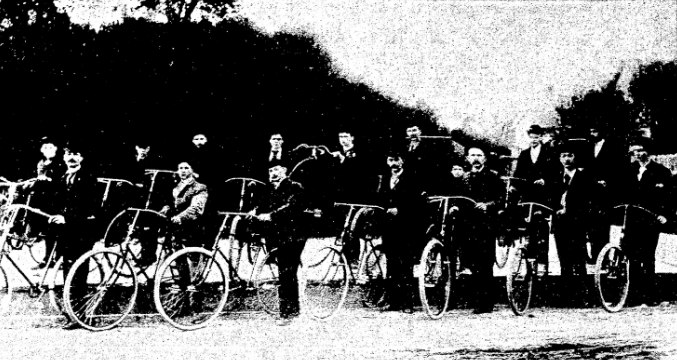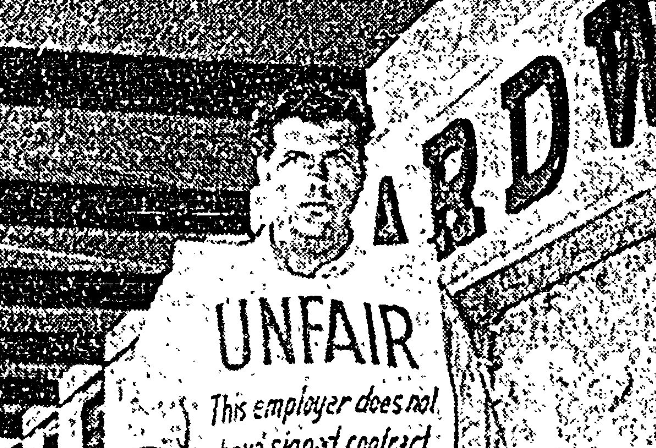On more than one muddy Saturday in the 1890s, groups of Tacoma bicyclists pedaled south toward Olympia, only to turn back in frustration. The road between Nisqually and the capital was a slog, a stretch so notorious that “weekend wheelmen” abandoned their plans rather than push their gleaming new safety bicycles through miles of muck.
For decades, Olympia had already endured the political humiliation of defending its status as the state capital against the ambition of cities Tacoma. So to have Tacoma cyclists literally turn up their noses at the condition of the road to Olympia? For men like Dr. P.H. Carlyon, that was simply too much. If the state capital was going to command respect, it needed passable routes. If the county wasn’t going to build them, Olympia’s elite would do it themselves.
Thus began the first organized effort to construct bicycle paths in Thurston County.
The Bicycle Craze Reaches Olympia
The 1890s bicycle boom wasn’t unique to this region; it was a national mania. The safety bicycle, with two equal wheels, a chain, and pneumatic tires, transformed cycling into a middle-class pastime. By 1897 the U.S. was producing up to two million bicycles a year; by 1900, as many as five million Americans owned one.
As crazes sometimes take a while longer to reach us, Olympia’s residents were still no exception. While the nationwide fascination of bikes crested in 1896, in 1897 we formed the Olympia Bicycle Path Association, which grew into the Thurston County Bicycle Path Association by 1899. The membership rolls read like the social directory of the era: physicians, businessmen, former territorial officials. This was not a club of hobbyists, it was a political organization capable of getting things done.
Building the First Bike Network
The Association’s work didn’t focus primarily on city streets. Olympia’s dirt roads were rough but rideable. Most of their work was on the countryside. The challenge wasn’t commuting; it was leisure. Riders wanted smooth, scenic routes to Woodland (now Lacey), to South Bay, to Tumwater, to Little Rock, and even toward Nisqually, where a connection to Tacoma awaited.
Several projects stand out:
- Franklin Street Path (1899): Construction began in May and marked one of the first formal, graded bike facilities in Olympia.
- Little Rock Path (1899): Completed by July and praised as a “splendid path,” it demonstrated the Association’s ability to finish large, coordinated works.
- Olympia–Tumwater Route: Following Cleveland Avenue to Custer, this corridor provided one of the most useful regional connections.
- Olympia–Nisqually Path: A bold link aimed at stitching Thurston County into the broader Puget Sound biking network.
In a sense, these paths were the 1890s equivalent of mountain bike trails or ski slopes, recreational amenities more than transportation necessities. Their funding and maintenance depended entirely on public enthusiasm to pay a fee toward the path association. So when the bicycle craze collapsed around the turn of the century, the paths faded too. By 1901, the association was effectively defunct.
But for former association president P.H. Carlyon, his few years of advocating for bike path construction set him up for his career defining task.
Carlyon’s Next Act: From Wheelmen to Earthmovers
Dr. P.H. Carlyon had been the president of the Bicycle Path Association in 1898. Just over a decade later, he would become mayor of Olympia. And from 1910–1911, he oversaw one of the largest landscape transformations in city history: the Carlyon Fill, which used more than two million cubic yards of dredged material to reshape what is now downtown Olympia.
In 1913, Carlyon was elected to the state legislature, where he became one of the driving forces behind Washington’s early highway system. Long before the interstate system, Washington built an ambitious network of paved highways connecting cities, routes like Martin Way and Capitol Boulevard that we now take for granted.
It was Carlyon, the former bicycle-path enthusiast, who championed the funding, engineering, and political will for this transformation.
The irony is almost too perfect: the man who once built bike paths so Tacoma riders wouldn’t mock Olympia eventually built the paved roads that would help bicycles vanish from everyday use.
Why the Early Highways Stuck—and the Bike Paths Didn’t
The bicycle paths of the 1890s died because they were built for fun. Highways, on the other hand, were built for commerce, growth, and a modern identity. People had traveled between cities by boat or train. Paved highways were a radical new form of freedom and a new type of economic infrastructure.
Once the state invested in roads, every subsequent decision reinforced the automobile’s dominance. Land was platted for cars. Businesses oriented their entrances around them. Neighborhoods sprawled out to follow them. By the mid-20th century, the original bicycle network was not just forgotten, it was unimaginable.
Today, we can’t picture tearing up paved streets and going back to gravel. The world Carlyon helped build is so complete, so normalized, that even questioning it feels disruptive.
Now, more than a century later, Olympia is again working to expand bike infrastructure. But today’s bike lanes aren’t recreational corridors stretching into the countryside. They’re transportation, intended to help people move within the city, through the very corridors Carlyon and his peers carved out for cars.












